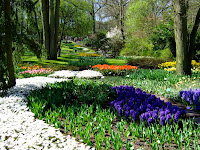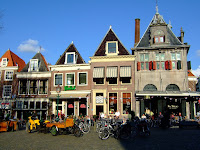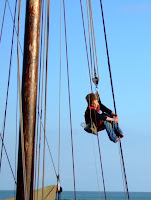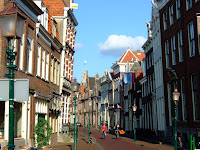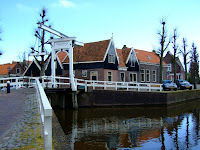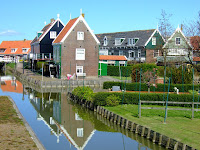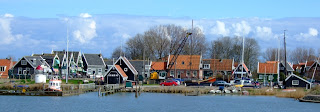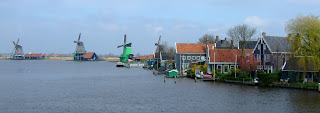
Zaanse Schans is an area beside the River Zaan that used to have
 200 windmills. Today there are eight working windmills left. As well as the expected flourmill and water-pumping mill (both quite tiny) there is a sawmill, a mustard mill (family run since 1792), an oil mill and the last remaining paint mill where they grind pigments for artist’s paints. The area has been turned into a model village, by the addition of houses that have been relocated here. There are merchants' houses along the river and workers' cottages on the lower-lying ground. In spite of the tourist buses it is a tranquil and fascinating place to visit.
200 windmills. Today there are eight working windmills left. As well as the expected flourmill and water-pumping mill (both quite tiny) there is a sawmill, a mustard mill (family run since 1792), an oil mill and the last remaining paint mill where they grind pigments for artist’s paints. The area has been turned into a model village, by the addition of houses that have been relocated here. There are merchants' houses along the river and workers' cottages on the lower-lying ground. In spite of the tourist buses it is a tranquil and fascinating place to visit.

Back in Amsterdam we had a final wander through the city before heading to the airport for a dream run home: the BA pilot managed to chop 20 minutes off a 65-minute flight; the immigration queue was three people long; bags were 4th and 7th on to the carousel; the inter-terminal shuttle was waiting; the Southern train was at the platform when we got there; we had 5 minutes to wait at Clapham Junction; and the Harrow & Wealdstone Tube had just pulled in to Wilesden Junction as we ran down the stairs. 2:40 from take-off gate to front door at the end of a holiday weekend - quite remarkable.











